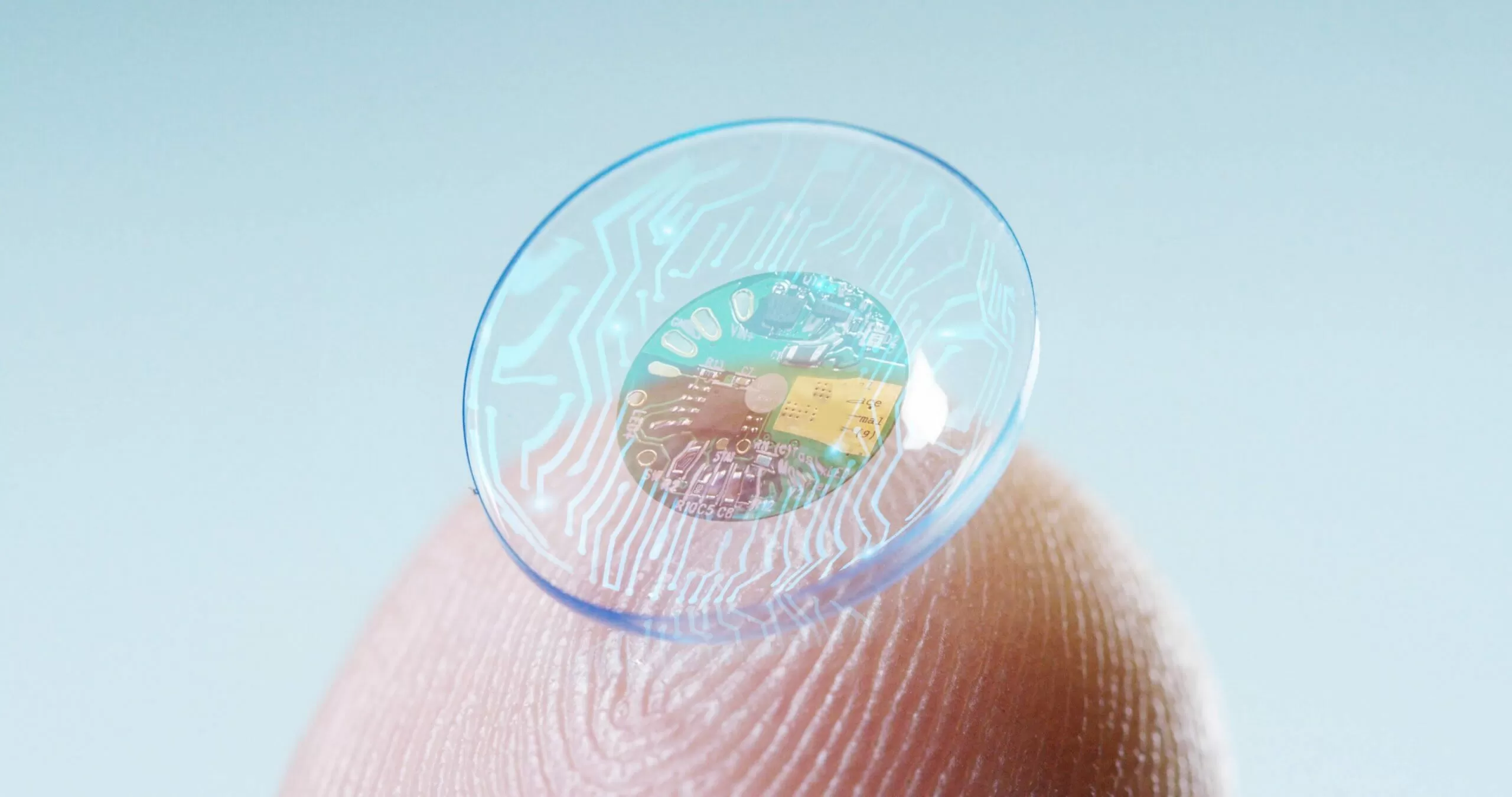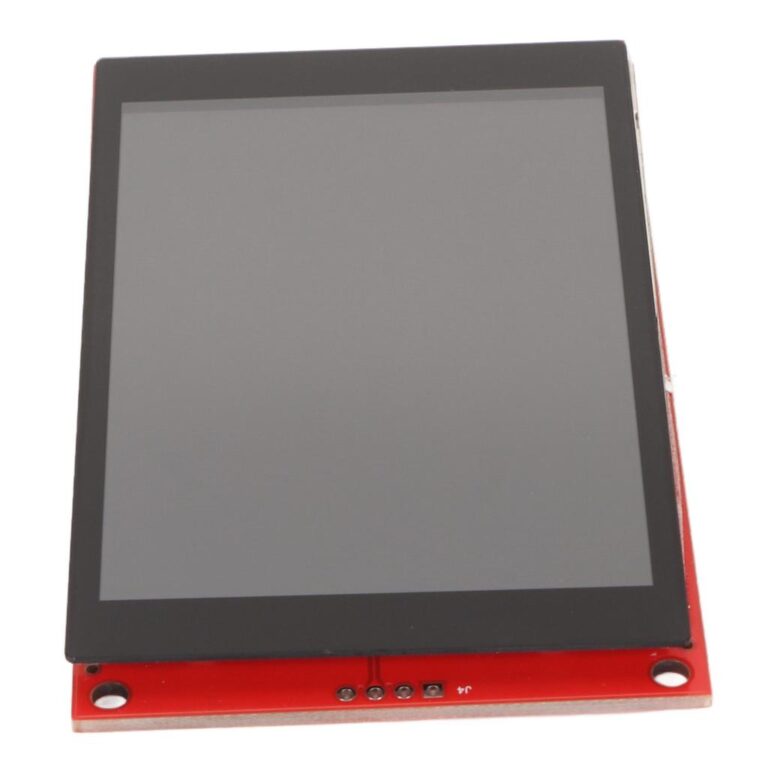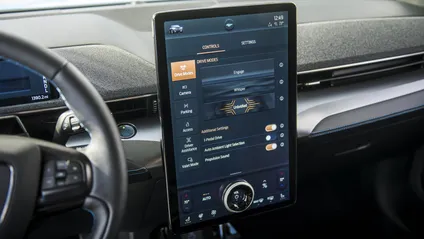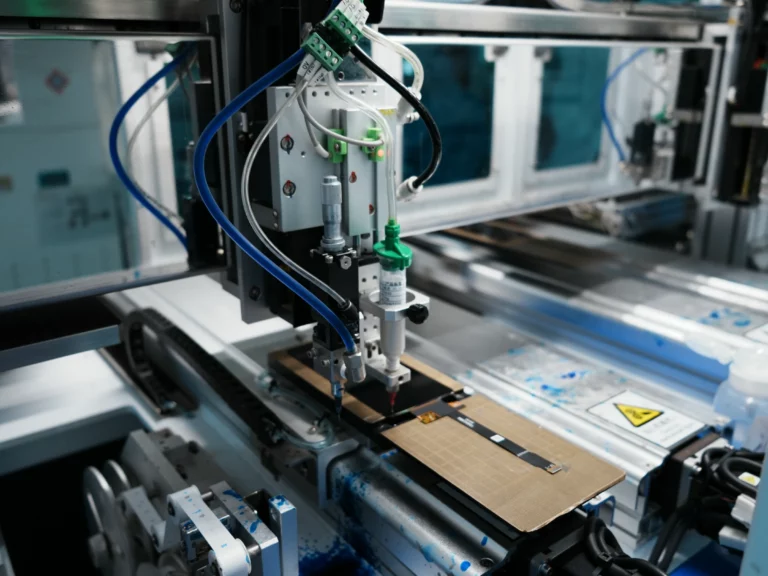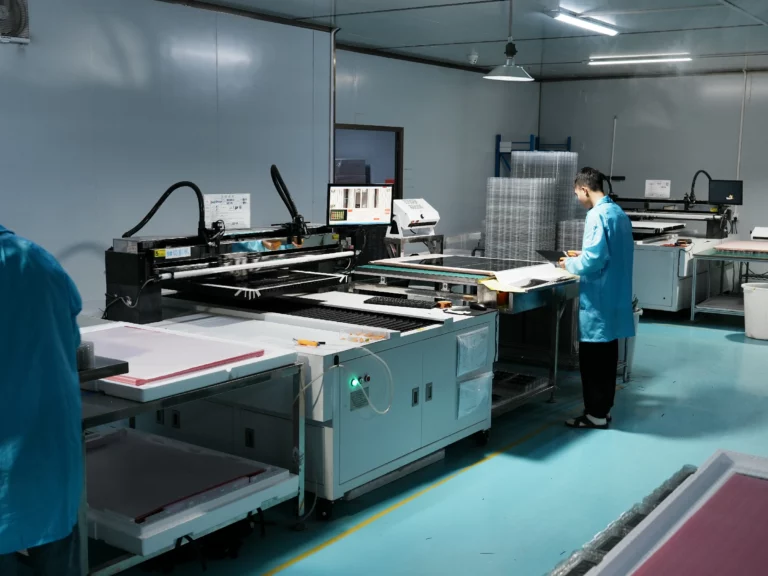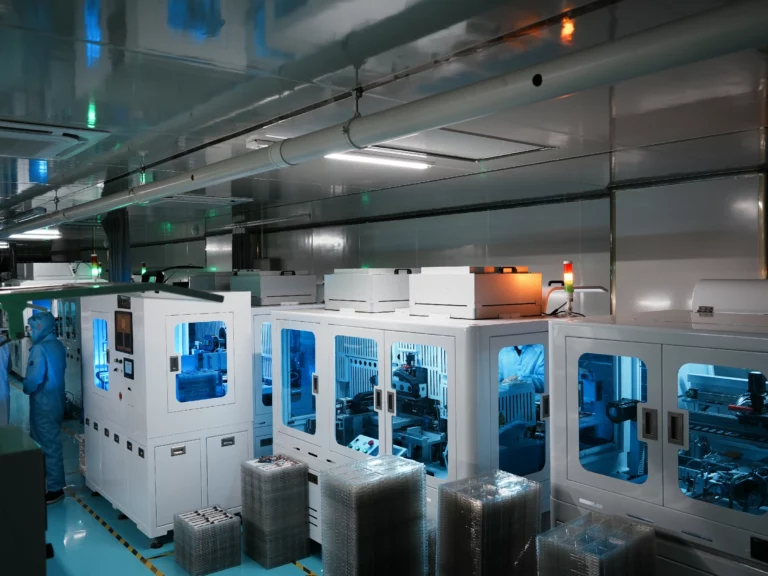The Dream Takes Shape: Early Concepts and Prototypes
Pioneering Proposals
The idea dates back to visionary inventors like Steve Mann, who sketched a bionic contact lens with an embedded display em 1999. These early ideas merged AR and miniature optics but remained conceptual due to technological constraints.
Google’s Smart Lens for Glucose Monitoring
In 2014, Google’s Verily unveiled a prototype sensory contact lens designed to measure glucose levels in tears with an embedded wireless chip and pinhole micro-sensor. Despite the innovation, the project was suspended in 2018, as tear glucose readings failed to correlate reliably with blood glucose.
Advanced R&D: CMST’s Electro-Optic Lens
Researchers led by De Smet in the 2010s developed thermoformed electro-optic layers inside a contact lens, including ultra-low power driver chips, micro-batteries, and hermetic protective coatings. This pioneering work demonstrated technical feasibility, albeit without full commercialization.
Breaking Ground: AR-Enabled Contact Lens Prototypes
Mojo Vision’s Ambitious Leap
Mojo Vision, founded in 2015, delivered perhaps the most advanced prototype: a microLED display com 14,000 pixels per inch (PPI) just 0.5 mm in diameter, combined with motion sensors, eye tracking, a custom ASIC, and a wireless communication system. A CEO demo in 2022 showcased on-eye AR overlays such as compasses and teleprompters.
However, by 2023 Mojo Vision pivoted away from smart lenses and laid off 75% of staff, retaining only its microLED technology.
XPANCEO and Multi-Functional Lenses
More recently, XPANCEO (2025) secured $250 million funding to develop smart contact lenses offering AR, night vision, optical zoom, tear-based biomarker sensors, intraocular pressure monitoring, and wireless power transfer. These lenses aim for medical niches before possible consumer rollout in the 2030s.
Other Academic and Prototype Advances
- South Korean researchers demonstrated a glucose-alert LED lens, with tear fluid sensors triggering visual cues.
- Retina-embedded displays using conductive thin films advanced low-tech prototypes.
- Military research prototypes explored AR overlay lenses for soldiers.
The Technological Tightrope: Engineering Challenges
Miniaturization and Fabrication
Integrating a display, sensors, power source, radio, and driver IC into a tiny biocompatible lens demands ultra-precise microfabrication—thermoforming liquid-crystal cells, encapsulating circuitry against tear fluid, and ensuring oxygen permeability.
Power and Energy Constraints
Mini-batteries or wireless power via NFC may power prototypes briefly; yet continuous power remains a challenge, complicated by heat and safety concerns.
Biocompatibility and Comfort
Long-term wear demands biocompatible materials that allow tear exchange. Overwear risks irritation, infection, or corneal damage.
Visual UX and Optical Design
Fitting meaningful AR content into a narrow ~50° field of view while avoiding optic fatigue requires collimated retinas, minimal interface clutter, gaze-based input, and dynamic brightness compensation.
Health, Safety & Privacy
Soft contact lens misuse can cause serious health issues. Electronic implants that continuously record visual data raise huge privacy and surveillance risks.
Regulatory Barriers
As medical devices, smart lenses need FDA approval—requiring extensive clinical trials and long-term safety data.
Market Viability & Business Models
High manufacturing cost, unclear consumer demand, and speculative revenue models make business scaling difficult. Mojo Vision’s pivot and Verily’s discontinued project illustrate these economic limits.
The Market Retreat: Why the Concept Lost Momentum
We’ve seen pioneering projects reach working prototypes—but none have reached market viability, for several intertwined reasons:
- Technical Overreach – multiple engineering hurdles remain unsolved.
- High Costs – manufacturing is too expensive.
- Funding Constraints – R&D investors pulled back.
- Regulatory Complexity – lengthy approvals deter momentum.
- Consumer Reluctance – hesitation about putting electronics on the eye.
- Privacy & Ethics – invisible surveillance concerns.
Lessons Learned: Why the Market Turned Away
- Viabilidade ≠ Demanda. O simples facto de existirem protótipos não significava que os consumidores mainstream os adoptariam.
- Segurança Primeiro. O olho humano é delicado; a adopção massiva segura exige biocompatibilidade quase perfeita.
- Alternativas Melhores. Os óculos de RA e os smartphones continuam a ser mais viáveis.
- Aplicações Especializadas Ganham. Lentes de uso médico, como sensores de pressão intraocular, avançam mais rapidamente.
O Caminho à Frente: A Ideia Regressará Alguma Vez?
Embora a lente com ecrã incorporado generalizado não tenha sido lançada comercialmente, tendências em curso podem reviver partes do conceito:
- Aplicações Médicas – Lentes de monitorização de biomarcadores e glaucoma da XPANCEO.
- Designs Híbridos – lentes graduadas com óptica de RA passiva.
- Wearables sem Olhos – óculos de RA como soluções práticas.
- Tecnologias de Componentes – microLED da Mojo Vision a beneficiar outros dispositivos.
- Quadros Éticos – regulamentação e confiança necessárias para adopção futura.
Conclusão
A jornada das pantallas LCD incorporadas em lentes de contacto foi um sonho tecnológico extraordinário—que exigiu avanços na microelectrónica, óptica e interfaces homem-máquina.
Embora pioneiros como Google, Mojo Vision e XPANCEO tenham feito progressos notáveis, múltiplas barreiras—técnicas, de saúde, económicas e éticas—acabaram por afastar a adopção mainstream.
À medida que a tecnologia evolui ainda mais, especialmente em contextos médicos e assistivos, implementações híbridas ou parciais ainda podem ter sucesso. Mas, por agora, as lentes de contacto inteligentes com ecrãs incorporados permanecem uma visão do futuro… não propriamente uma realidade.


